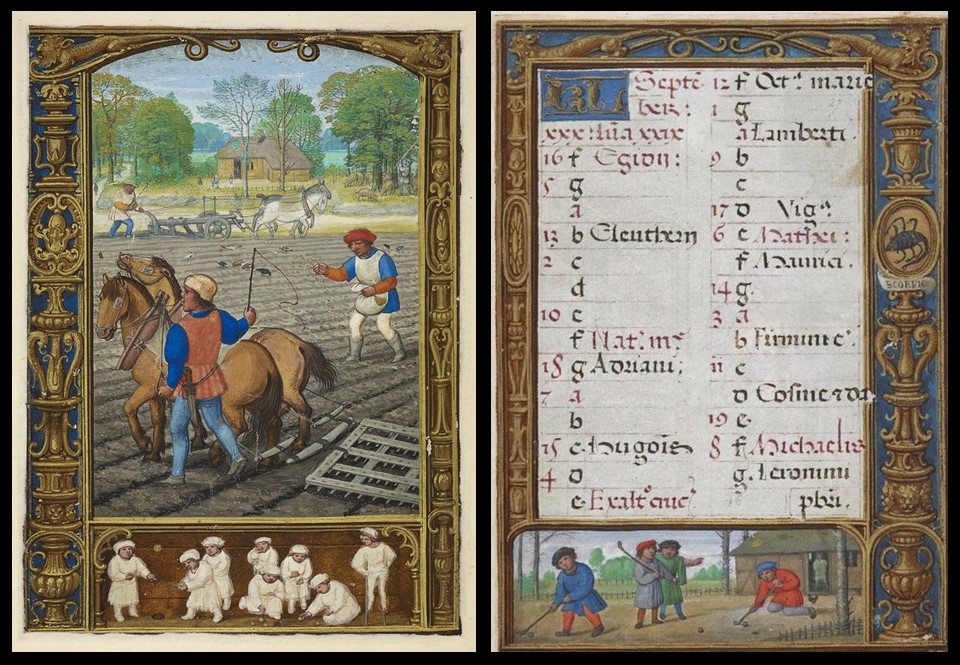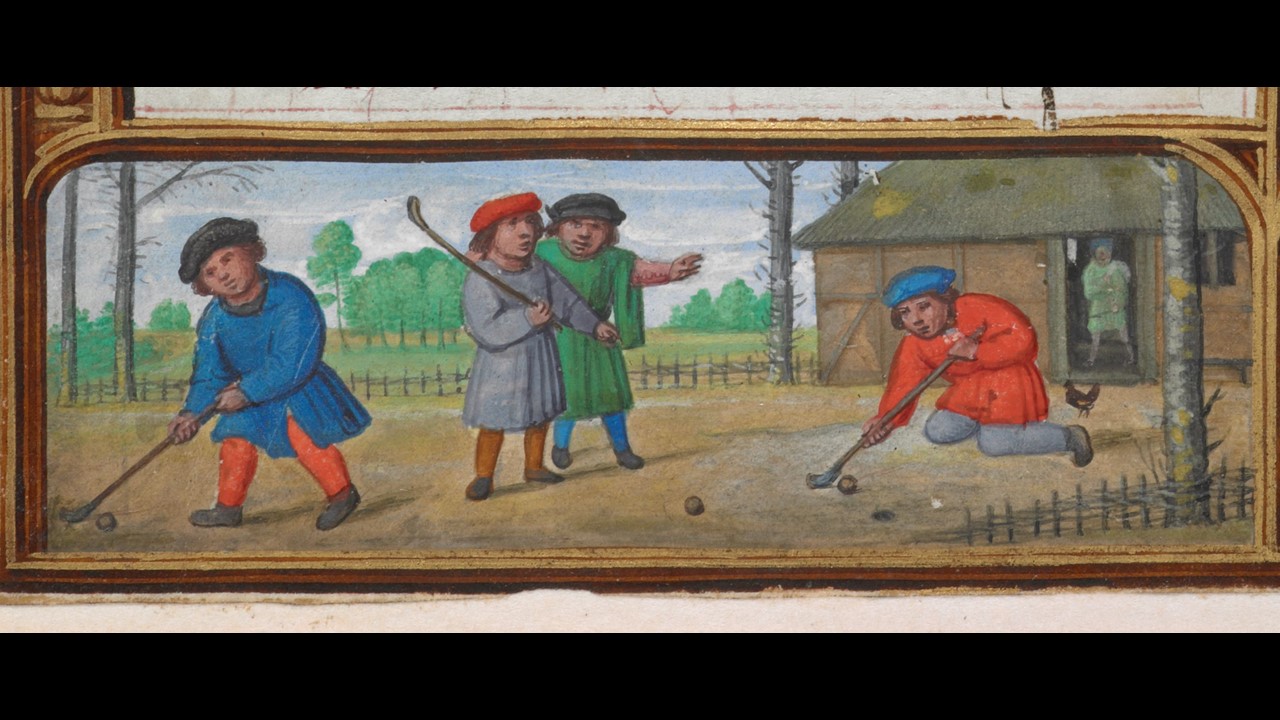
Book of Hours, known as the Golf Book September (f. 26v and f. 27r),c. 1540, 30 Parchment leaves on paper mounts, bound into a codex, 110 x 80 mm (text space: 85 x 60 mm), British Library, London, UK
https://blogs.bl.uk/digitisedmanuscripts/calendars/page/10/
Andrew Lang (1844-1912) is a famous Scottish poet who wrote a Ballade dedicated to the Royal Game of Golf…There are laddies will drive ye a ba’ / To the burn frae the farthermost tee, / But ye mauna think driving is a’, / Ye may heel her, and send her ajee, / Ye may land in the sand or the sea; / And ye’re dune, sir, ye’re no worth a preen, / Tak’ the word that an auld man’ll gie, / Tak’ aye tent to be up on the green! Simon Bening (d. 1561) is an equally celebrated Flemish artist who dedicated a manuscript illumination, f. 27r dedicated to the month of September, to the popular game of “Golf.” Let’s see what Simon Bening’s September page all is about! https://www.scottishpoetrylibrary.org.uk/poem/ballade-royal-game-golf/
Part of a very unique and special manuscript in the Collection of the British Library, known as the Golf Book, are two pages (f. 26v and f. 27r), dedicated to the month of September. Simon Bening, the manuscript’s illuminator, created two very different scenes. Folio 26v, for example, depicts typical agricultural activities of September like ploughing, sowing, and harrowing. Folio 27r, on the other hand, is about sports, specifically about men playing a game that closely resembles golf (hence the name given to this manuscript, the Golf Book). https://blogs.bl.uk/digitisedmanuscripts/calendars/page/10/

Book of Hours, known as the Golf Book, September (Detail f. 27r), c. 1540, 30 Parchment leaves on paper mounts, bound into a codex, 110 x 80 mm (text space: 85 x 60 mm), British Library, London, UK
http://www.bl.uk/manuscripts/Viewer.aspx?ref=add_ms_24098_fs001r
As the British Library experts support… golf is not to everyone’s taste. Mark Twain, they explain, is accredited with describing the game as “a good walk spoiled”; and, like many sports, it’s arguably better fun to play, Twain believed, than to watch. So, what is the fuss with the game of “Golf” depicted in Folio 27r of the 16th century Flemish Manuscript splendidly illuminated in the city of Bruges by Simon Bening? https://britishlibrary.typepad.co.uk/digitisedmanuscripts/2013/05/a-good-walk-spoiled.html?_ga=2.181798823.1064566353.1657532469-1622143414.1655957049
At first sight, the British Library experts continue, we can certainly deduce that this game does resemble golf, even down to the cloth caps that some of the competitors are wearing. Simon Bening presents a fenced field, four competitors, three of which hold curled sticks, reminiscent of modern golf clubs, and three “golf” balls. Could the man that wears a green cloak, depicted gesticulating to his companion, be what we now call a caddie? Could the fifth man presented in the middle ground be a “golf” fan waiting at the door of the nineteenth hole for a round of beer? We will probably never know. For modern golf players the stance of the player on the right, in the orange-red jerkin, is all wrong as modern golfers play the game on their feet, rather than on their knees, both to get a better purchase on the ball and for better balance. Simon Bening presents us with a wonderful scene of a 16th-century golf-like game played with curled sticks and a leather ball. Could this be an early form of modern Golf? We will probably never know. https://britishlibrary.typepad.co.uk/digitisedmanuscripts/2013/05/a-good-walk-spoiled.html?_ga=2.181798823.1064566353.1657532469-1622143414.1655957049
For a PowerPoint on the Golf Book, please… Check HERE!